
Зошит Англ мова СОЗ 3 курс 2 семестр
.pdf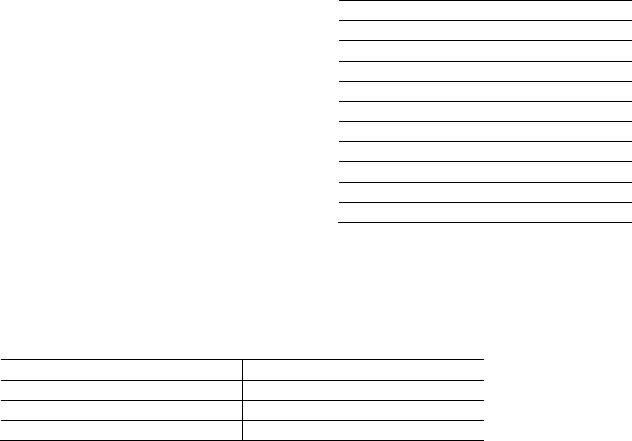
We don't want to risk (7)__________________ a bus and having to wait half an hour. Daniel: Or we could take a taxi to the bus station and then get a bus from there.
Matthew: Well, you can carry on (8)___________ the problem, but I'm going to ring for a taxi.
Activity 4. Complete the sentences so that they mean the same as the first sentence. Use ing.
1.I can do what I want and you can't stop me. You can’t stop me doing what I want.
2.It's not a good idea to travel during the rush hour.
It's better to avoid _____________________________________________________.
3.Shall we go away tomorrow instead of today?
Shall we postpone ________________________________ until______________________?
4.The driver of the car said it was true that he didn't have a licence.
The driver of the car admitted ____________________________________________.
5.Could you turn the radio down, please?
Would you mind____________________________________________________________?
6.Please don't interrupt me all the time.
Would you mind____________________________________________________________?
Activity 5. Combine the words "advanced", "leading", "progressive" with a proper English word to form the word-combinations corresponding to the following Ukrainian ones.
передова наука |
article |
прогресивні ідеї |
mankind |
прогресивна технологія |
course/studies |
прогресивна людина |
specialist |
прогресивний письменник |
science |
передовий робітник |
man |
передова бригада |
technology |
передова стаття |
ideas |
провідний інженер |
worker |
провідний спеціаліст |
writer |
прогресивне людство |
engineer |
поглиблений курс |
team |
Activity 6. Arrange the following words in pairs according to.
a) similar meaning: fierce, advanced, broad, severe, indisputable, wide, highly-qualified, developed, unquestionable, well-trained.
b) opposite meaning: complete, high, favourable, important, advanced, short, peaceful, incomplete, low, broad, long, unfavourable, unimportant, backward, military, narrow.
21
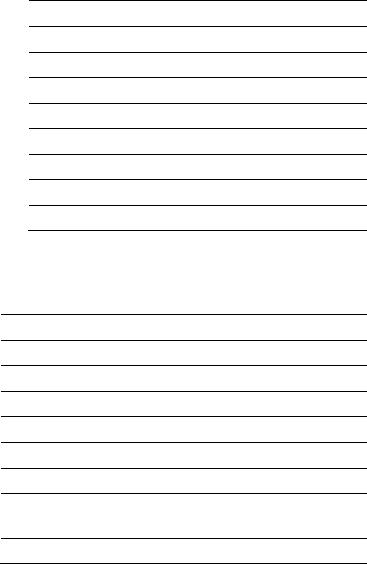
Activity 7. In the following word-combinations use "of-phrase" instead of the Possessive Case.
•our country's technical achievements
•the engineer's design
•our country's advanced science
•Ukraine's scientifictechnological potential
•mankind's greatest advance
•contemporary engineers' creative initiative
•Ukraine's leading position
•world's first space flight
•higher technical establishment's curricula
•the designer's overall problem
Activity 8. Use the Possessive Case of the Nouns where possible.
•the talent of the engineer
•the discovery of the scientist
•the labour resources of the country
•the training of the engineers
•the post-graduates of the institute
•the invention of our research workers
•the abilities of the man
•the contribution of our scientists
•scientific groups and societies of the students of our institutes
•training of highly qualified specialists
Activity 9. Make up sentences of the following words and word-combinations.
1.is increasing, the technological revolution, the role of, engineers, research-workers, design engineers, in the period of;
2.and space engineering, in the middle of, such branches of engineering as, the 20th century, there appeared, nuclear engineering;
3.our engineers, socially useful persons, must be, and, active public figures.
Activity 10. Put questions to the words in bold type and translate them into Ukrainian.
1.Person-machine systems have a variety of different interfaces between the person and the machine.
2.Scientific and technical achievements of our country are undisputable.
3.In our higher schools a great attention is paid to the development of students' scientific world
outlook.
22

4.An important pole in the course of intensifying the economy will be played by engineers.
5.Only a well-trained engineer can cope with his tasks.
6.Many achievements of our scientists and engineers are recognized all over the world.
Activity 11. Put the verbs in brackets in the correct tense form, state the type of Predicates and translate the sentences into Ukrainian.
1.In Ukraine there (to be)________________ a single system of education.
2.At various departments of secondary technical schools and higher educational establishments there (to be) ________________different sets of subjects.
3.Any citizen of our country (to have) ________________ right to free education and training according to his choice.
4.At present there (to be) ________________ hundreds of subdivisions of engineering and engineers.
5.Graduates of specialized and polytechnic institutes (to get) ________________ a deep knowledge of fundamental sciences and special subjects.
Activity 12. Insert appropriate prepositions.
The successful work ______ an enterprise is largely dependent ______ highly qualified management. It involves a complex ________ managerial abilities, skills and techniques
________dealing _________ economic, technical and human problems.
All _______ the world there is nowadays a growing awareness _______ the importance
_________management.
Post-graduate training courses ____________ management are held __________
universities and technical institutes. Management became a subject __________ scientific study and research.
Activity 13. Translate the following sentences into English.
1.Інженерів готують у технічних вузах i на деяких факультетах університетів.
2.У мене багато товаришів у політехнічному інституті.
3.Багато відкриттів наших ученкх та інженерів запатентовано за рубежей.
4.Деякі випускники нашого факультету мають намір вступати до acпірантури.
5.Чи впроваджена якась твоя раціоналізаторська пропозиція?
6.Досягнення науки i техніки використовуються для блага всього людства.
Activity 14. Answer the following questions on the text.
1.What is the main motive power of the technological progress?
2.What are our achievements in science and technology?
23
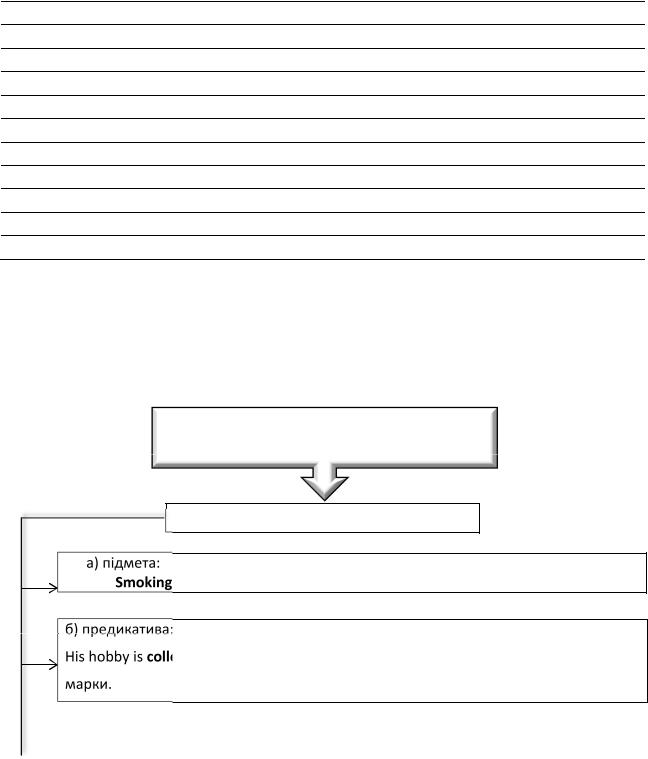
3.What facts can prove the importance of science for technology?
4.In what fields of science and technology have we high results?
5.What does Ukraine produce?
6.What is the role of an engineer in the technological progress?
7.Where are engineers trained?
8.What subjects are important for future engineers?
9.What qualities of an engineer are important?
10.What decides the final success of an engineer's design?
Activity 15. Write a short summary of the text according to your own plan.
Home task: _______________________________________________________________________
Заняття 5.
Тема Іменникові властивості герундія. Телекомунікації
ІМЕННИКОВІ ВЛАСТИВОСТІ ГЕРУНДІЯ
Виконує такі синтаксичні функції:
is harmful. Палити — шкідливо.
collecting stamps. Його улюблене заняття — колекціонувати поштові
24

в) додатка (прямого і прийменникового):
He likes talking to me. Він любить розмовляти зі мною. She is fond of painting. Вона любить малювати.
Крім того, герундій має ще такі іменникові властивості:
а) перед герундієм може вживатися прийменник, що відноситься до нього:
Nobody thought of going to bed. |
Ніхто й не думав лягати спати |
б) перед герундієм, як і перед іменником, може вживатися присвійний займенник або іменник у присвійному відмінку:
Don't fear my forgetting her. Не бійтесь, що я забуду її.
Would you mind my opening the window?
Ви не заперечуєте, якщо я відчиню вікно? I insist on my sister's staying at home.
Я наполягаю на тому, щоб моя сестра залишилася вдома.
Activity 1. Translate into Ukrainian.
A.I'm really looking forward to going to New York.
B.Are you? I'm not. I can't stand visiting noisy cities.
A. But New York is wonderful. I love seeing the skyscrapers, the museums, the historical
monuments, the Statue of Liberty...
B. I hate visiting museums. I’m not looking forward to going at all.
A. Oh, it's so exciting! I like listening to the sounds of New York — the traffic, the different
languages...
B.The noise! I can tell you, I hate visiting noisy cities!
A. Oh, come on! It'll be fun. New York's a great big melting pot of people from all over the world. And the world capital is worth seeing. It's so interesting!
B. That's what you think! And the city's so dirty, you know.
A. You are right, it is dirty. But it is beautiful, too. The Big Apple is really worth visiting!
Activity 2. У поданих реченнях замініть підрядні додаткові речення з герундієм із
прийменником of.
E.g. She thought she would go to the country for the weekend. She thought of going to the country for the weekend.
1. І thought I would come and see you tomorrow.
2. I am thinking that I shall go out to the country tomorrow to see my mother.
3.What do you think you will do tomorrow? — I don't know now; I thought I would go to the zoo, but the weather is so bad that probably I shan't go.
4.I hear there are some English books at our institute bookstall now. — So you are thinking that you will buy some, aren't you?
5.I thought I would work in the library this evening, but as you have come, I won't go
to the library.
25
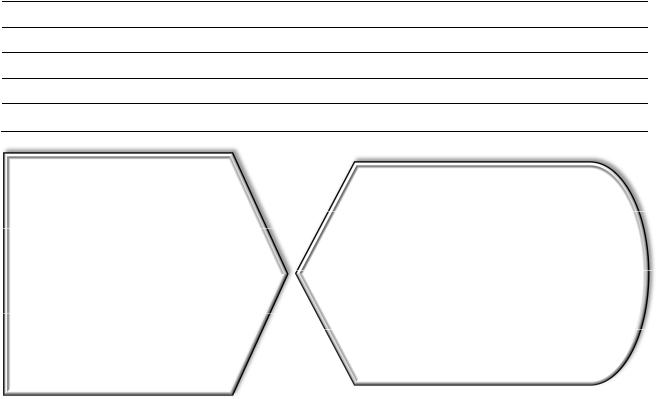
+ TO-INFINITIVE
These verbs are followed by a to-infinitive.
agree, aim, appear, arrange, ask, attempt, beg, can't afford, can't wait,choose, claim, decide, demand, desire, expect, fail, guarantee, happen, help, hope, manage, offer, plan, prepare, pretend, promise, prove, refuse, seem, tend, threaten, turn out , undertake, want, wish
+ ING-FORM
These verbs are followed by an ing-form.
admit, avoid, cant face, can't help can't resist, can't stand, carry on consider, delay, deny, detest, dislike enjoy, excuse, fancy, finish, give up imagine, involve, justify, keep (on) mention, mind, postpone, practise put off, resent, risk, save, suggest tolerate
Activity 3. Complete the conversations. Put in a to-infinitive or an ing-form.
►A: I hear you sometimes sail to France in your boat. B: That's right. I really enjoy sailing.
1.A: Are you going to organize our trip?
B: Yes, of course. I've agreed____________________________it.
2.A: You wear a uniform at work, don't you?
B: Yes, I have to, although I dislike ________________________ it.
3.A: Do you think they'll approve the plan?
B: Yes, I'm quite sure they'll decide __________________________ it.
4.A: What time will you be back?
B: Oh, I expect_________________________ back some time around nine.
5.A: Did I remind you about the dinner tonight?
B: Yes, thank you. You keep__________________________me.
6.A: Was your decision the right one, do you think?
B: Yes, luckily. In the end it proved____________________ the best thing for everyone.
7.A: Do you still work at the post office?
B: No, I gave up__________________________________ there last year.
8.A: Have ICM bought the company?
B: Well, they've offered____________________________it.
9.A: I'm sorry you had to wait all that time.
B: Oh, it's all right. I didn't mind___________________________.
Activity 4. Translate into Ukrainian.
1.There is one more point worth mentioning.
2.It is no use searching for another approach.
3.It is no good arguing about this issue.
4.Would you mind answering one more question?
26

5.Go on demonstrating your slides.
6.Avoid mixing these two substances.
7.This paper is worth reading.
8.I can't help regretting it.
9.He had to give up experimenting.
Activity 5. Read and translate the text.
The history of modern-day communications technology can be said to have started when Samuel Morse invented the wireline telegraph in 1832. However, it was Alexander Graham Bell’s invention of the telephone, in 1874, that led to the development of our present day communications technology. Morse had simply created a way for humans to extend their ability to transfer information – instantly – over great distances. Bell gave us the ability to have the most intimate form of communication over distances – the use of our voices.
The wireless telegraph (now referred to as radio) was invented by Guillermo Marconi in 1896. When wireless communication was final ly able to be used for voice transmis sion, it emulated the telephone system. From 1874 to 1980, communication networks around the world were constructed to facilitate the efficient and economical transmission of voice conversations.
The Internet, first developed in 1973 as a project for the U.S. Department of Defense Advanced Research Projects Agency (ARPA), initiated a profound change in the future development of communications networks and technologies. Originally called the Arpanet – linking several Universities and research laboratories – it evolved into the world wide web (WWW)
By 2003, wireless (cellular telephone) networks were available to almost every location of the United States (remote wilderness areas still lack coverage) .
Transmitter, receiver, transmission medium - these are the basic elements that make up a communication system. Every human being is equipped with a basic communication system. The mouth (and vocal cords) is the transmitter, ears are the receivers, and air is the transmission medium over which sound travels between mouth and ear.
Fiber, copper, radio, infrared all have different transmission characteristics. Fiber is considered to have the best overall characteristics for transmission efficiency.
However, consider that radio signals at very low frequencies (below 500 kilohertz) can travel for thousands of miles. This type of radio signal can be used to carry data, but very impractical for use in traffic signal and freeway management systems.
27

The most common types of transmission media used today:
Copper Wire
Fiber Optics
Radio Frequency (Wireless) Free Space Optics
Copper Media
There are two primary types of cables containing copper wire used for communication:
Twisted Pair
Coaxial
Twisted pair is the ordinary copper wire that provides basic telephone services to the home and many businesses.
Twisted copper pair, is what Alexander Bell used to make the first telephone system work and is generally the most common transmission medium used today.
A broad generalization is that twisted copper pair is in fact the basis for all telecommunication technology and services today.
Coaxial cable is a primary type of copper cable used by cable TV companies for signal distribution between the community antenna and user homes and businesses.
Coaxial cable is called "coaxial" because it includes one physical channel (the copper core) that carries the signal surrounded (after a layer of insulation) by another concentric physical channel (a metallic foil or braid), and an outer cover or sheath, all running along the same axis. The outer channel serves as a shield (or ground). Many of these cables or pairs of coaxial tubes can be placed in a single conduit and, with repeaters, can carry information for a great distance. In fact, this type of cable was used for high bandwidth and video service by the telephone companies prior to the introduction of fiber in the 1980’ s .
Activity 6. Answer the questions.
1.What is telecommunication?
2.What are the basic elements that make up a communication system?
3.Who was the early inventors in telecommunication?
4.What is a transmitter?
Activity 7. Complete the sentences.
1.The Internet as a project for the U.S. Department of Defense Advanced Research Projects Agency (ARPA) first developed in ________.
28
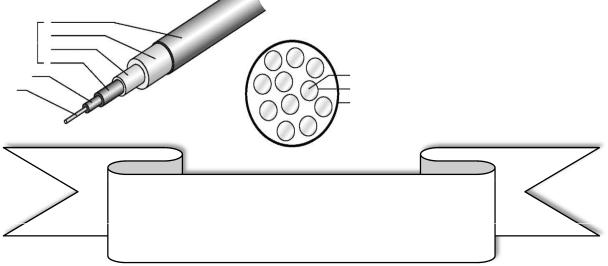
2.Alexander Graham Bell invented the telephone in ___________.
3.Wireless (cellular telephone) networks were available to almost every location of the United States by _______.
4.Samuel Morse invented the wireline telegraph in ____________.
5.Guillermo Marconi invented the wireless telegraph (now referred to as radio) in ______.
Activity 8. Choose the correct answer.
1. Morse had simply created a way for humans to extend their _________to transfer
information. |
|
|
a. ability |
b. capability |
c. possibility |
2.Radio signals at very ________frequencies (below 500 kilohertz) can travel for thousands of miles.
a. round |
b. deep. |
c. low |
3.Bell’s invention of the telephone led to the ______________ of our present day communications technology.
a. extension b. development c. growth
4. Communication networks around the world were constructed to__________ the efficient of
voice conversations. (полегшувати, сприяти) |
|
|
a. facilitate |
b. help |
c. provide |
5. In fact the basis for all telecommunication technology and services today ______________.
a. twisted copper pair |
b.copper wire |
c. coaxial cable |
Optical Fibers versus Copper Cables
coatings
cladding |
conductor |
core |
insulator |
|
outer jacket |
Optical fibers are made of extremely high-purity silica, which must be free of even extremely small levels of impurities and other defects that would absorb, scatter or weaken a light beam.
29

Fibers carry signals more efficiently than copper cable and with a much higher bandwidth.
For optical fibers the longer transmission distances require fewer expensive repeaters.
Optical fiber cables are much lighter and thinner (about 120 micrometers in diameter with the same bandwidth.
It is difficult to steal information from optical fibers.
Optical fibers don't ignite so they can be used safely in flammable atmospheres, e.g. in petrochemical plants.
Optical fibers are more expensive per meter than copper.
Activity 9. Match the advantage with its effects(s). |
|
|
|
|
|||||
|
Advantage |
|
|
|
|
Effect |
|||
1. |
Higher capacity |
|
|
a. |
Less frequent repeaters |
||||
2. |
Lower material cost |
|
|
b. |
More security |
||||
3. |
Smaller size |
|
|
c. |
Cheaper to produce |
||||
4. |
Higher quality of transmission |
|
|
d. |
More information |
||||
5. |
Complete electrical isolation |
|
|
e. |
Less space in ducts |
||||
|
|
|
|
|
|
f. |
Less interference/crosstalk |
||
|
|
|
|
|
|
|
|
|
|
|
|
1 |
|
2 |
3 |
4 |
|
5 |
|
|
|
|
|
|
|
|
|
|
|
Activity 10. Translate the sentences.
1.Optical fibres carry much information than conventional cables.
2.Many telephone calls can be transmitted using optical fibres.
3.Much data can be transmitted using conventional cable.
4.You hear much crosstalk when using optical fibre.
5.There is much interference on copper cables.
Activity 11. Complete the sentences. |
|
|
1. Optical fibres occupy ____________ |
|
|
a. space |
b.data |
c.duct |
|
|
30 |
